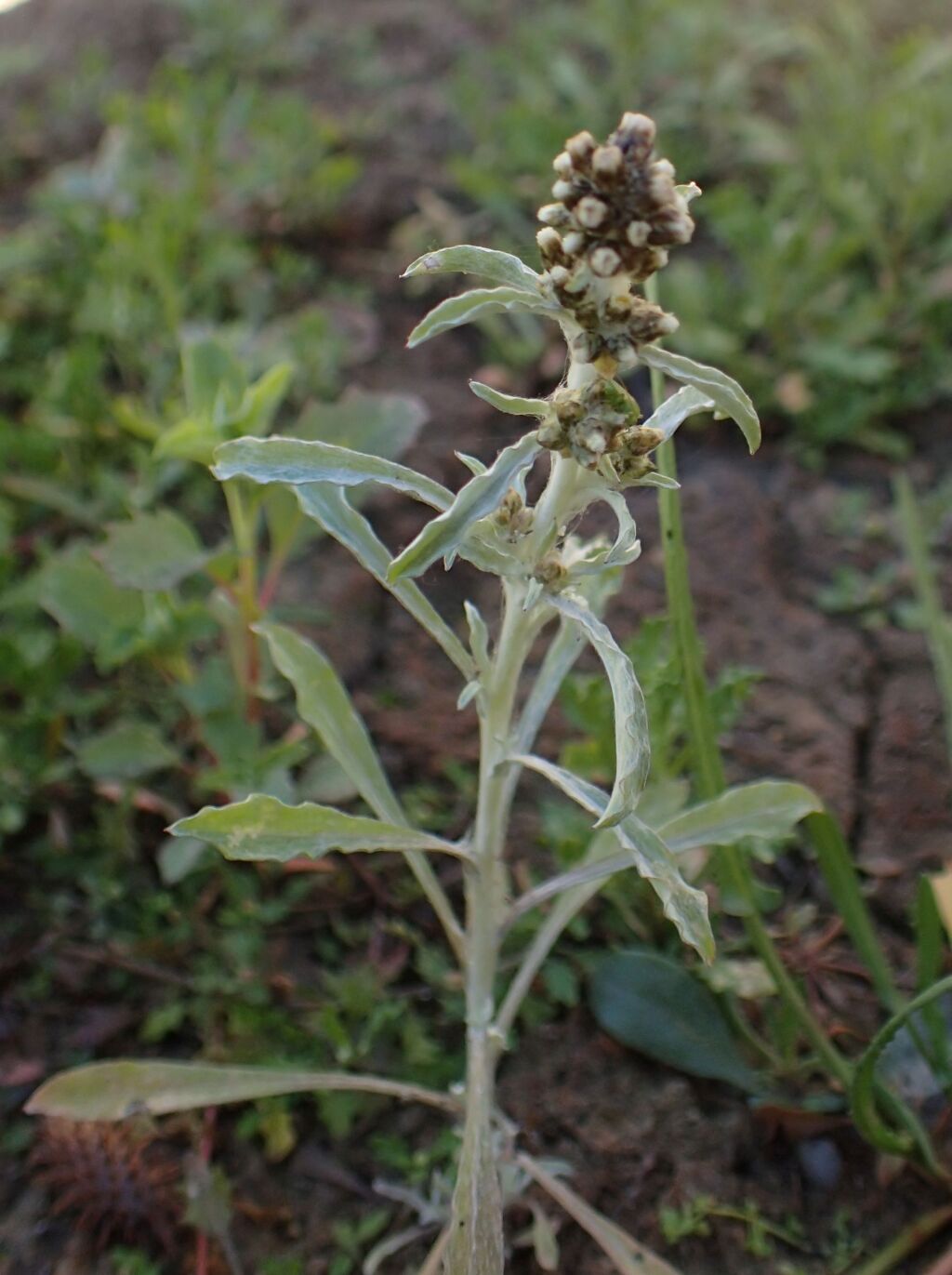Gnaphalium polycaulon
Pers. Indian CudweedErect or ascending, grey or grey-green cottony annual (5–)8–15 cm high, simple or branched from base and sometimes higher. Leaves oblanceolate or obovate (often with a slender, petiole-like base), 10–35 mm long, 2–6 mm wide, sometimes longitudinally folded, surfaces lightly to densely covered by subappressed, cottony hairs. Capitula crowded in short, terminal and upper-axillary, ovoid clusters c. 5–15 mm long, each cluster subtended by a floral leaf, but at least the upper cluster not overtopped by its subtending leaf, adjacent clusters often coalescing and inflorescence then appearing spike-like. Capitular bracts in c. 3 series, the outer shorter than inner, the inner elliptic to oblong, 1.7–2.5 mm long, obtuse to subacute, entire or ruminate, pale brown toward the apex; bisexual florets 2–7. Cypselas c. 0.4 mm long. Flowers mostly Sep.–Dec.
MuM, Wim, VVP, VRiv, MSB, RobP, MuF, GipP, Gold, CVU, HSF. All mainland States. Widespread through tropics and warmer temperate countries. Apart from an isolated occurrence beside Lake Glenmaggie near Heyfield and from Flinders Peak in the You Yangs, almost confined to heavy clay soils of the floodplain of the Murray River and its major tributaries.
Records of this species from areas other than indicated above, e.g. Corner Inlet (Willis 1973), are not substantiated by specimens and are here disregarded. They probably represent misdeterminations of Euchiton spp
Walsh, N.G. (1999). Gnaphalium. In: Walsh, N.G.; Entwisle, T.J., Flora of Victoria Vol. 4, Cornaceae to Asteraceae, pp. 826–827. Inkata Press, Melbourne.
 Spinning
Spinning


